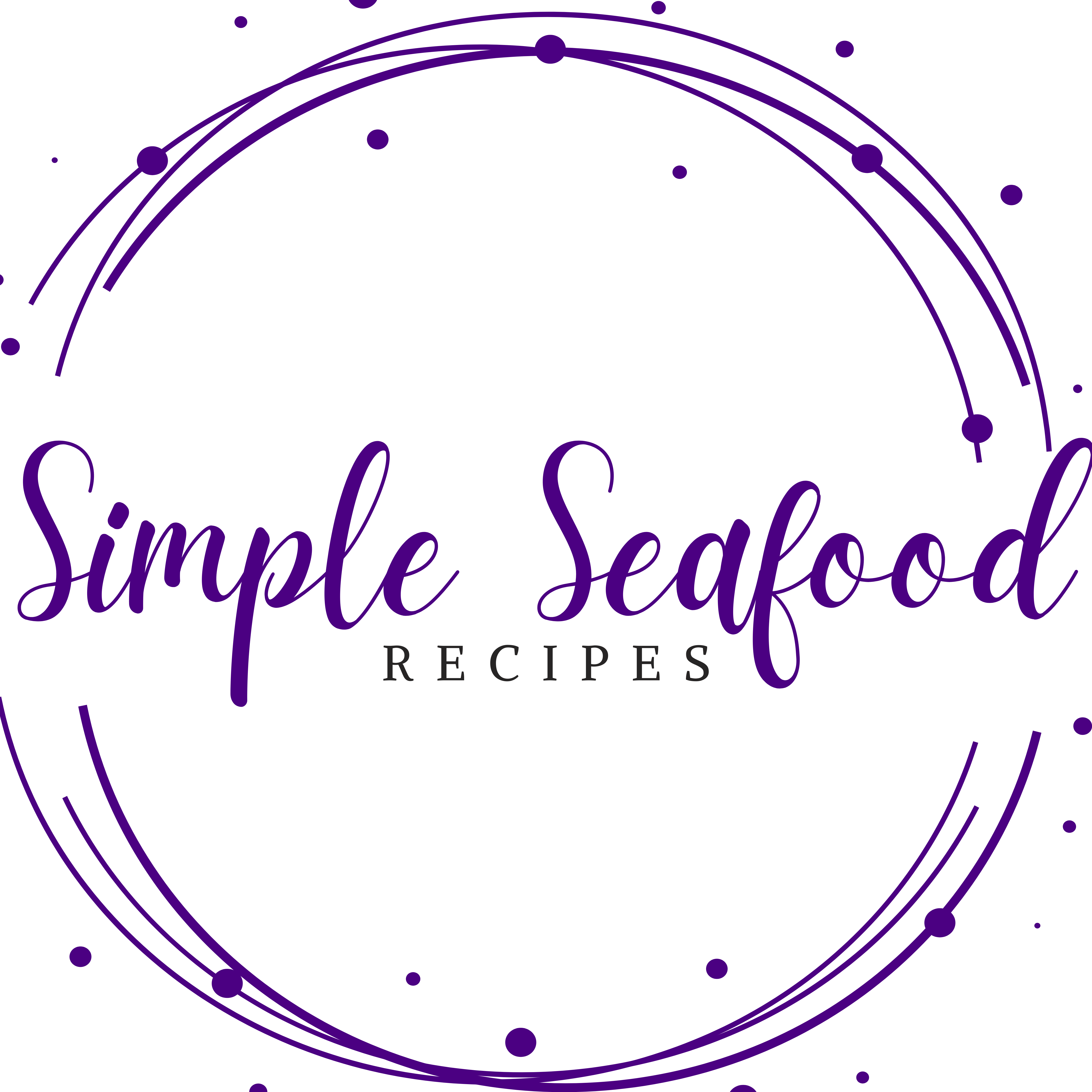This Easy Cajun-Style Salmon is served blackened with a homemade rub consisting of smoked paprika, cayenne pepper, oregano, thyme, and flavorful herbs. This dish is ready in under 15 minutes and can be pan-seared, baked, or fried in the air fryer.
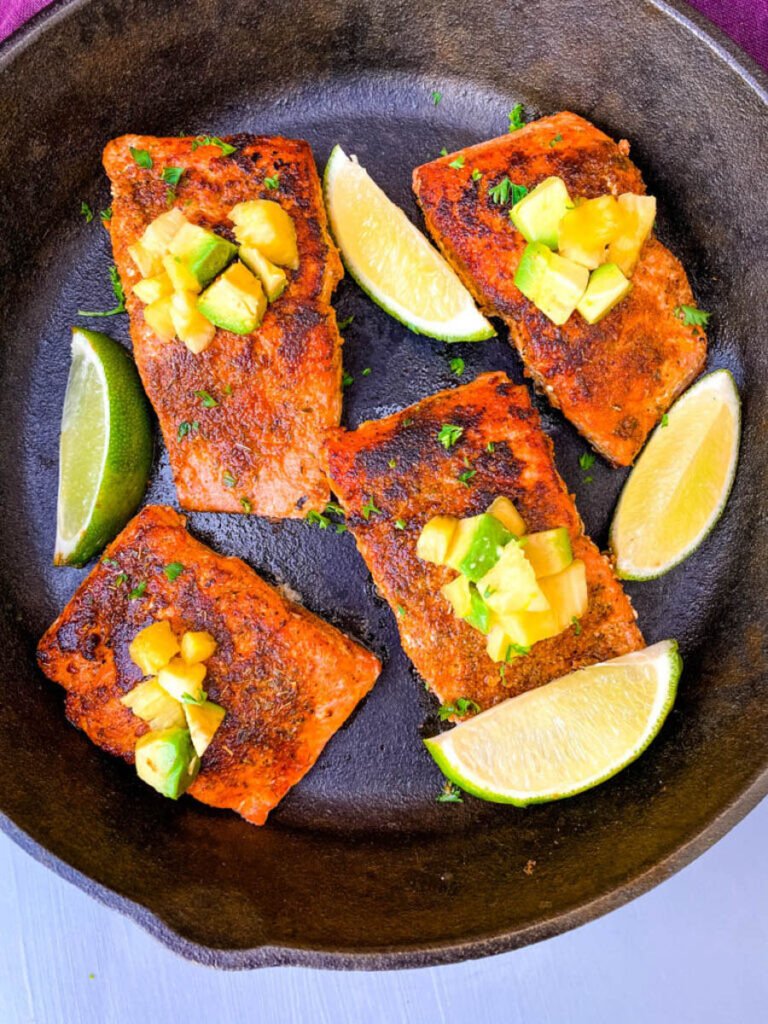
What is Cajun Seasoning
It’s a spice blend commonly used in Louisiana cuisine, particularly in Cajun cooking. It includes a combination of salt, garlic powder, onion powder, paprika, black pepper, cayenne pepper, oregano, and thyme.
Cajun cuisine is known for its bold and complex flavors that reflect the diverse cultural influences of Louisiana. It features a mix of French, Spanish, African, and Native American culinary traditions, with a focus on using fresh and flavorful ingredients.
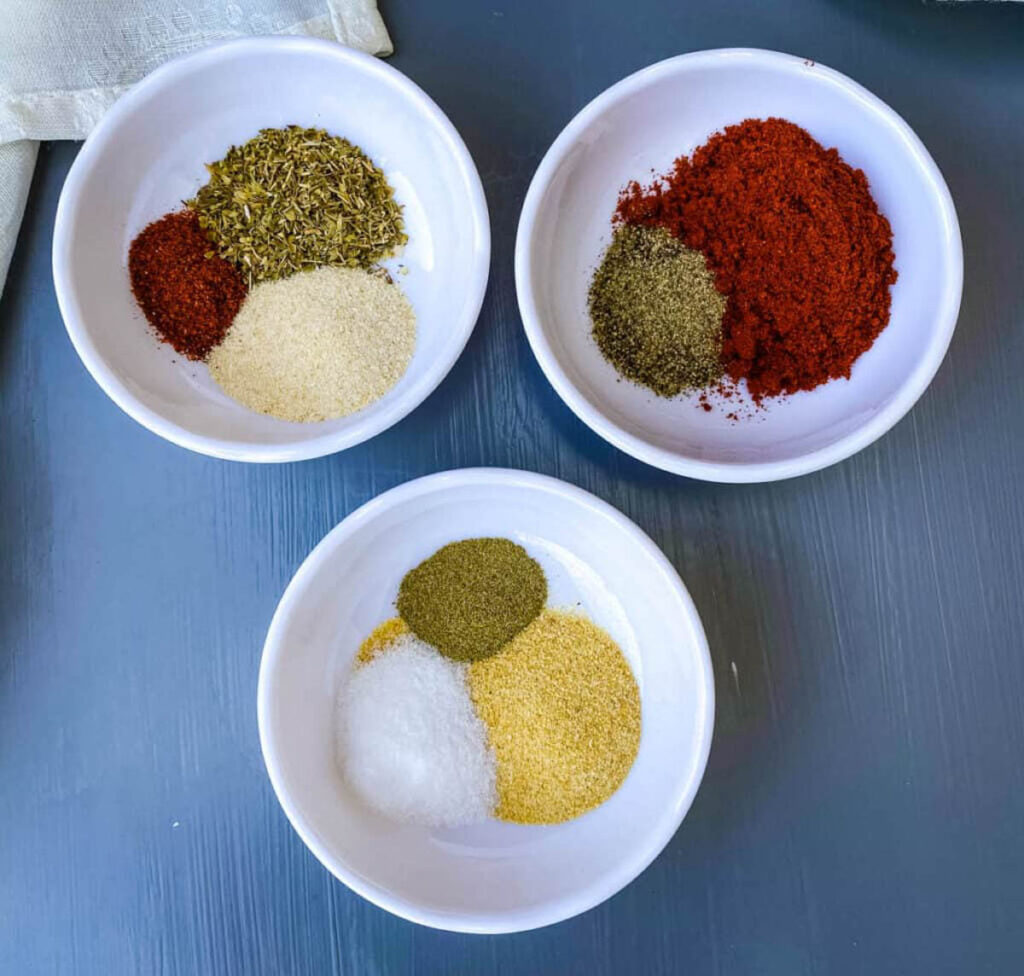
Is it Spicy
Cajun seasoning is typically spicy. It contains cayenne pepper and other spices that can add heat to dishes. The level of spiciness can vary depending on the brand or recipe of the seasoning, so some Cajun seasonings may be milder than others.
I like to make my own for this reason. It allows you to directly control the spice. It’s always a good idea to start with a small amount and adjust to your taste preferences. If you’re sensitive to spicy food, you can also look for Cajun seasoning blends that are labeled as mild or use less of the seasoning in your cooking
What Type of Salmon to Use
The best type to use is a matter of preference. The most common types of salmon include:
- Wild and/or Sockeye: Known for its deep red color and rich, oily flavor. It is considered one of the most flavorful types of salmon.
- Atlantic: It is farm raised and has a milder flavor than wild-caught salmon.
- Pink: It is the smallest of the Pacific salmon and has a mild, delicate flavor.
Ultimately, the best type of fresh salmon to use will depend on your personal taste preferences.
Salmon that is sourced from the Atlantic is usually farmed. Farmed means antibiotics and food coloring (to give it a pink color) are used. This adds harmful chemical additives to the fish. So I usually try to look for wild-caught salmon.
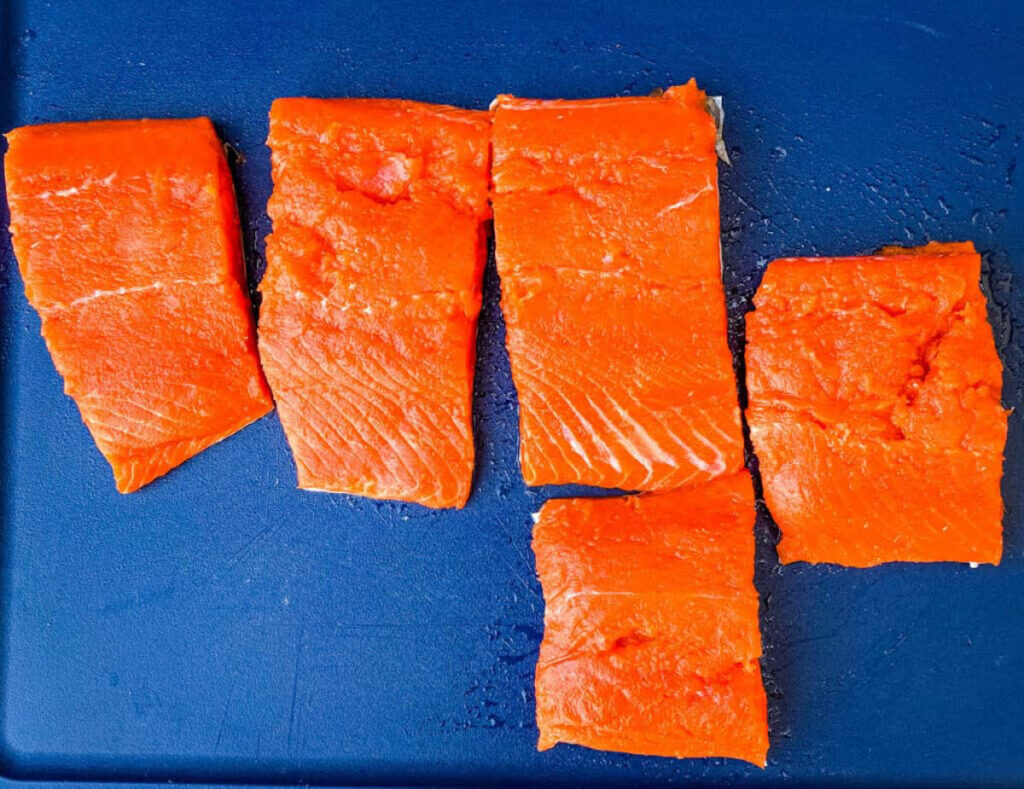
Skin on or Skin off?
Cooking salmon with the skin on can help to add flavor and keep the fish moist. The skin will also protect the flesh of the salmon while it cooks, this helps prevent it from over-cooking or drying out.
Cooking salmon with the skin off will allow the fish to cook more evenly, and the flesh will be exposed to more heat which can be desirable for some cooking methods. Keep in mind the flesh will be more delicate and may dry out more easily without the skin to protect it.
When cooking salmon with the skin on, it’s a good idea to remove it after cooking. It’s super simple to do so, and will usually glide right off. The skin will be crispy and delicious and the flesh will be tender and moist.
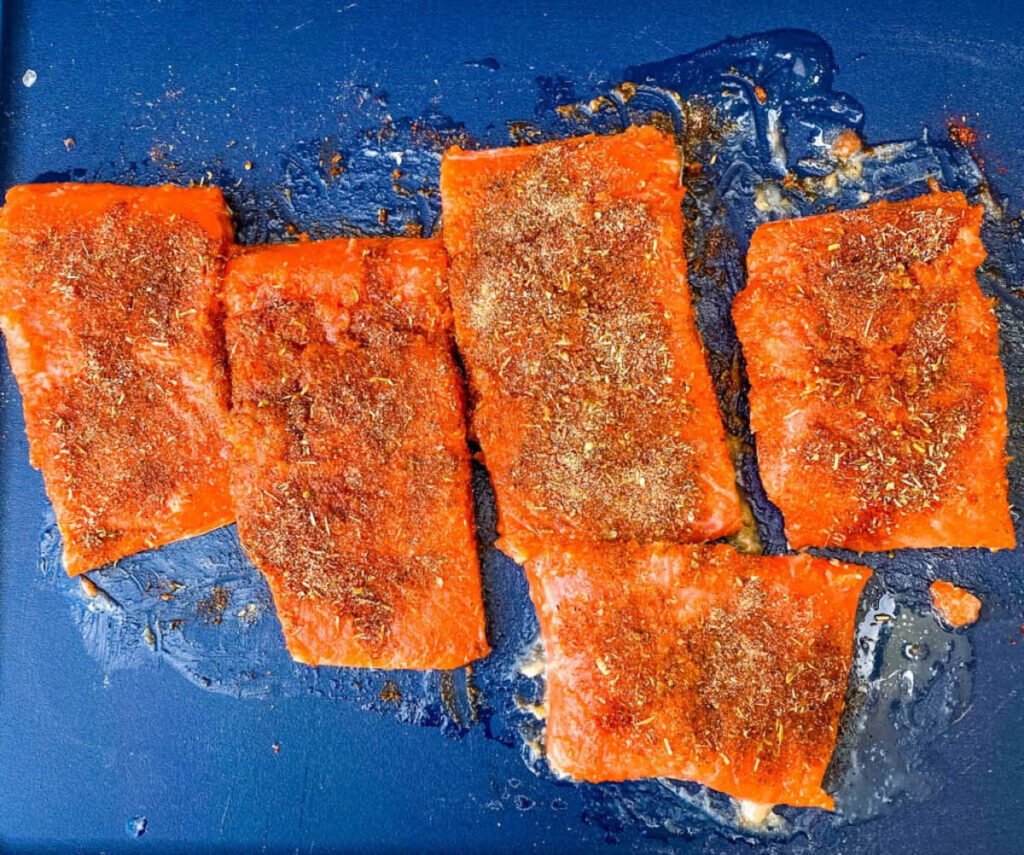
How to Make Cajun Salmon
Full detailed instructions are below in the recipe card.
- Drizzle melted butter onto both sides of the salmon.
- Combine the Cajun spices in a bowl and sprinkle the spices over the salmon.
- Heat a cast iron or stainless steel skillet on medium-high heat. Add butter.
- When the butter has melted, add the salmon to the pan and cook.
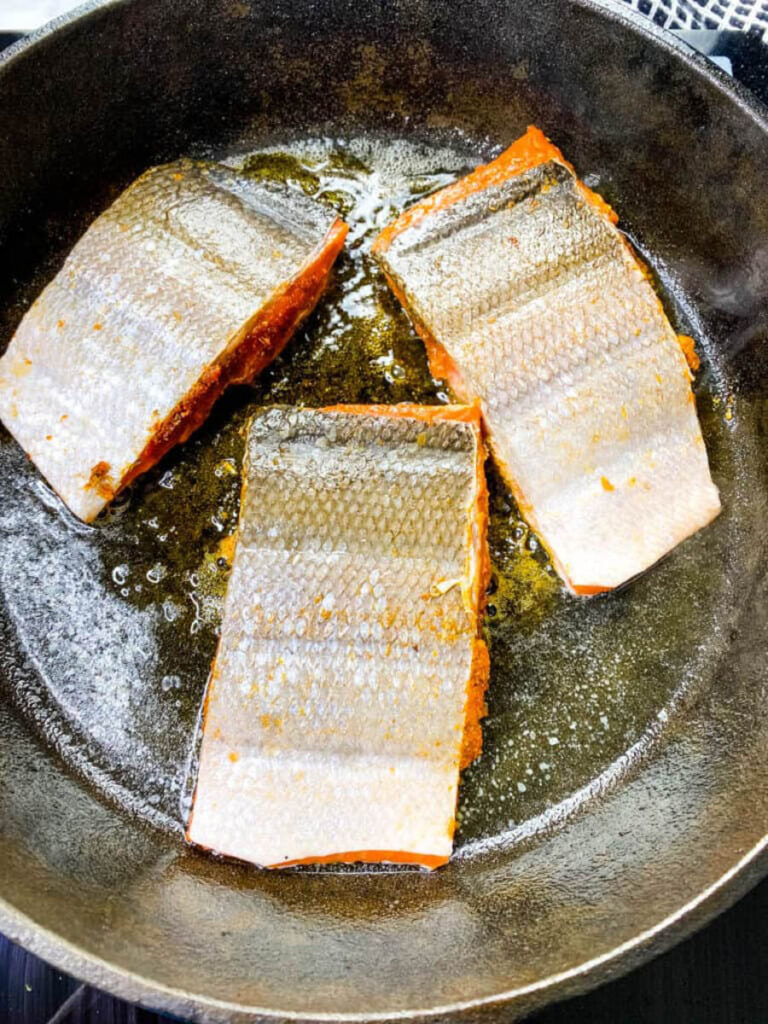
Baked Oven Method
Season the fish with the homemade or store-bought rub and follow the instructions in this Baked Salmon in Parchment Paper recipe.
Air Fryer Method
Season the fish with the homemade or store-bought rub and follow the instructions in this Air Fryer Salmon (15-Minute Recipe).
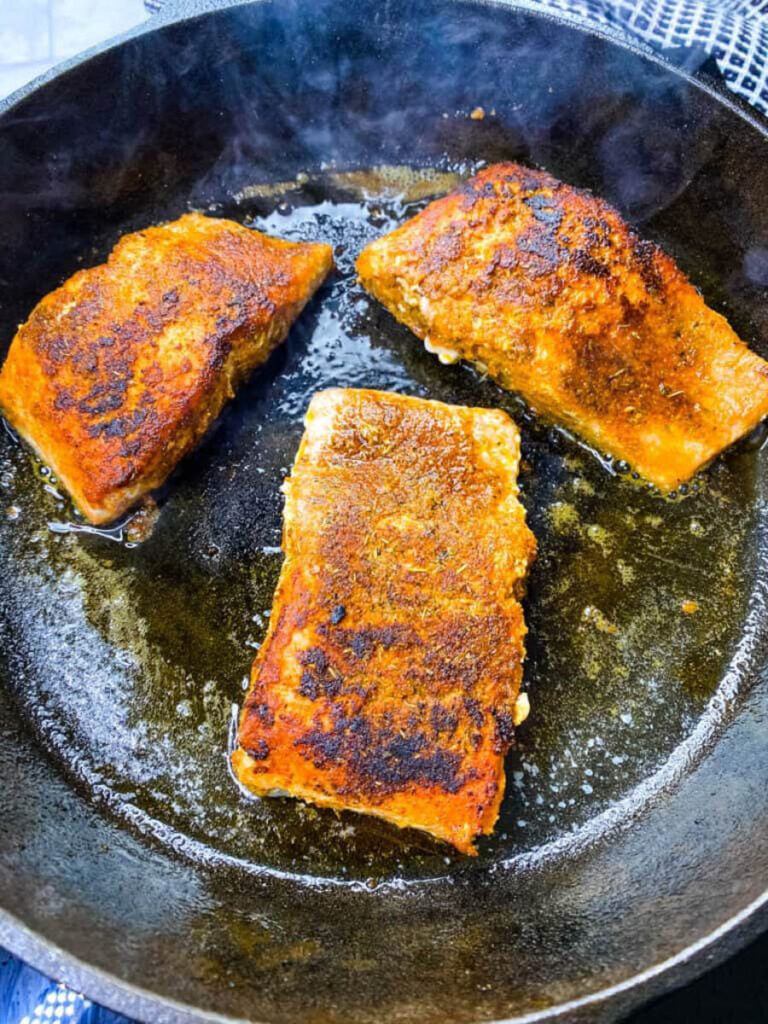
How to Tell When Salmon Has Finished Cooking
- Temperature: Use a meat thermometer and ensure the fish has reached an internal temperature of 145 degrees. Check the temperature in the thickest part of the fish.
- Appearance and Touch: Perfectly cooked salmon will have a light pink color and will be opaque throughout. The flesh will also start to flake when pressed with a fork.
- It’s important to note that salmon can be cooked to varying degrees of doneness, some people prefer it cooked through while others prefer it medium-rare at 135 degrees. Decide what works for you.
Dry and Overcooked Salmon
Overcooked salmon is dry and has little flavor. Fish (along with meat) will continue to cook when you remove it from heat. This is why it’s important to pay attention to how long the fish cooks.
When the fish is done, it will be a translucent pink in the middle. It should also look flaky. You can check out more tips on How to Tell if Salmon is Overcooked here.
How to Store Leftovers
Store the salmon tightly covered in the fridge for 3-4 days.
Freezer Tips
Leftovers can be frozen tightly sealed for up to 2 months. Defrost overnight in the fridge.
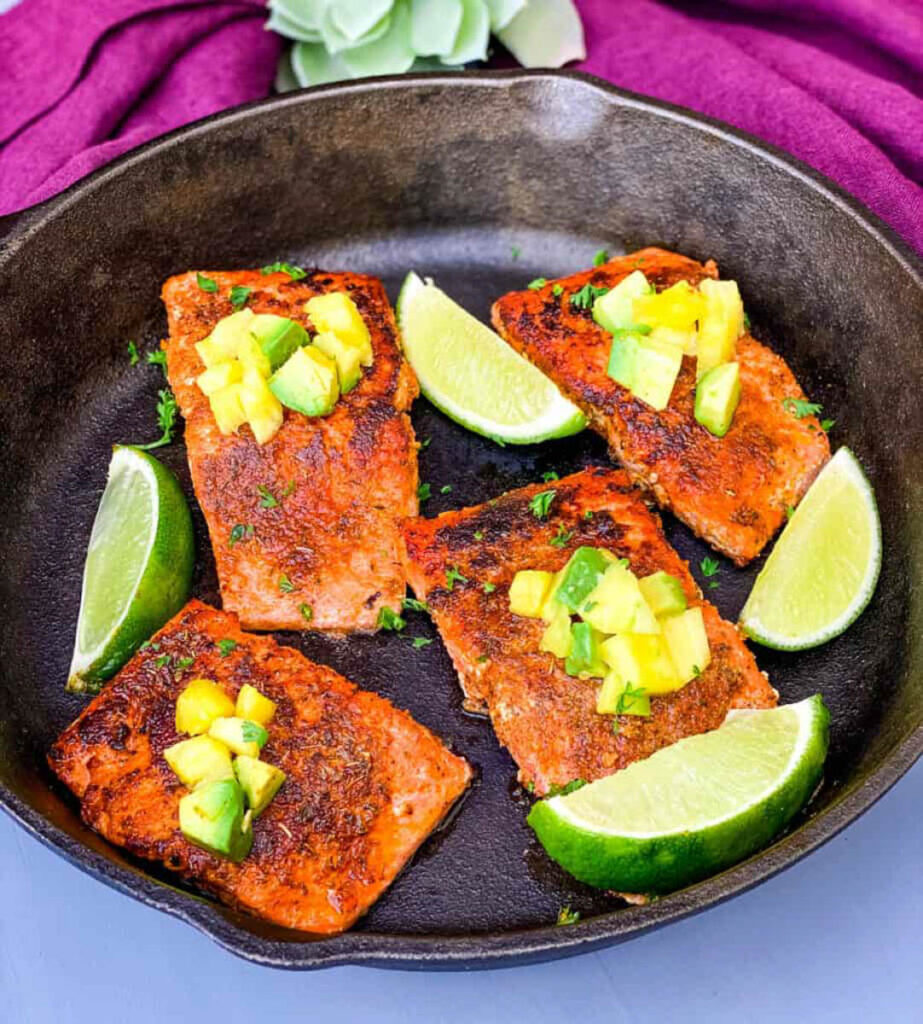
How to Reheat
I recommend you use the air fryer or oven. If using the oven, place the salmon on a baking sheet lined with parchment paper. Cover the salmon with foil and place it in the oven at 275 degrees until warm.
If using the air fryer, reheat it on 200 degrees for 5-7 minutes or until warm.
If you use the microwave, be swift! Don’t leave it in too long. It will dry out the fish.
Pair With These Recipes
Steakhouse Creamed Spinach
Mashed Sweet Potatoes
Air Fryer Green Beans
Collard Greens with Smoked Turkey
Cajun Shrimp and Sausage Pasta
Seafood Jambalaya with Shrimp
More Salmon Recipes
Air Fryer Salmon (15-Minute Recipe)
Baked Salmon Stuffed with Crab Meat
Maple Glazed Salmon
Cedar Plank Grilled Salmon
Smoked Salmon Eggs Benedict
Salmon Fried Rice with Vegetables
Salmon Rice Bowl
Easy Salmon Bites
Drizzle this in our Creamy Dill Sauce for Salmon or with our Pineapple Mango Salsa.
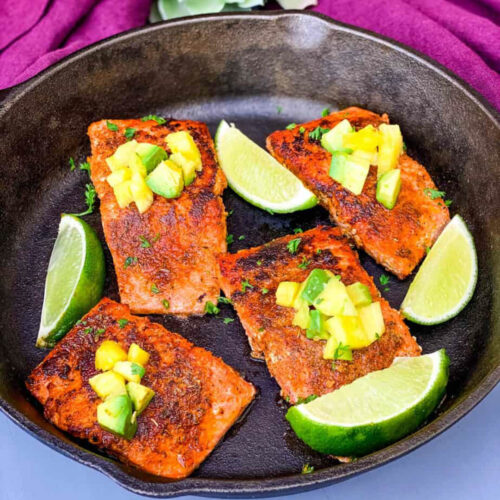
Easy Cajun Salmon
Equipment
Ingredients
- 1 pound raw salmon Mine was cut into fillets about 4-6oz each.
- 2 tablespoons unsalted butter 1 tablespoon melted to rub the fish. 1 tablespoon to cook in the pan
- 1 teaspoon smoked paprika
- 1/2 teaspoon cayenne pepper
- 1/2 teaspoon ground oregano
- 1/2 teaspoon onion powder
- 1/2 teaspoon garlic powder
- 1/2 teaspoon salt
- 1/2 teaspoon black pepper
- 1/4 teaspoon ground thyme
Instructions
- Dry the salmon completely and allow the salmon to come to room temperature for 15 minutes.
- Drizzle 1 tablespoon of melted butter onto both sides of the salmon.
- Combine the spices in a bowl and sprinkle the spices over the salmon. Be sure to season the sides of the salmon.
- Heat a cast iron or stainless steel skillet on medium-high heat. Add 1 tablespoon of butter. I used a 10 inch pan.
- When the butter has melted, add the salmon to the pan, skin-side up. Do not overcrowd the pan. The salmon shouldn’t touch. Cook the fish in batches if needed.
- Cook the salmon for 2-4 minutes until the side turn opaque. Monitor the sides of the salmon to determine the perfect time to flip. When the color of the side of the salmon has lightened about 3/4ths of the way up, it’s time to flip.
- Flip the salmon and cook for an additional 1-2 minutes or until the fish is opaque.
- Remove and cool before serving.
Notes
- You can use a store-bought Cajun rub if you wish.
- Dry the salmon thoroughly before coating it in butter or oil. Wet salmon is more likely to stick to the pan.
- Avoid using salmon cold and straight from the fridge. I like to pull the salmon from the fridge and allow it to rest for 15 minutes.
- The pan will need to get really hot. Cast iron usually smokes. This is normal. You can use a fan over the stove or open up a window as well.
- Don’t move the salmon after you have placed it down on the skillet. It’s more likely to crumble, break, and not turn out pretty! Allow it to cook and get ready for flipping.
- The color of the salmon will become lighter as it cooks. You can monitor the color of the sides to determine doneness. When the color of the side of the salmon has lightened about 3/4ths of the way up, it’s time to flip.
